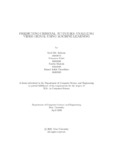| dc.contributor.advisor | Uddin, Jia | |
| dc.contributor.author | Sadman, Syed Md. | |
| dc.contributor.author | Kabir, Tabassum | |
| dc.contributor.author | Mostafa, Nairita | |
| dc.contributor.author | Chowdhury, Ahmed Ashik | |
| dc.date.accessioned | 2021-05-27T16:52:51Z | |
| dc.date.available | 2021-05-27T16:52:51Z | |
| dc.date.copyright | 2020 | |
| dc.date.issued | 2020-04 | |
| dc.identifier.other | ID 16101073 | |
| dc.identifier.other | ID 16101130 | |
| dc.identifier.other | ID 16101139 | |
| dc.identifier.other | ID 16301128 | |
| dc.identifier.uri | http://dspace.bracu.ac.bd/xmlui/handle/10361/14436 | |
| dc.description | This thesis is submitted in partial fulfillment of the requirements for the degree of Bachelor of Science in Computer Science and Engineering, 2020. | en_US |
| dc.description | Cataloged from PDF version of thesis. | |
| dc.description | Includes bibliographical references (pages 49-50). | |
| dc.description.abstract | Criminology is a method that is used to perceive wrongdoing and criminal qualities.
The crooks and the wrongdoing occasion likelihood can be overviewed with the
help of criminology frameworks. Video analysis and machine learning tasks have
been moving from inferring the present state to predicting the future state. Law
enforcement agencies can work e ectively and respond faster if they have better
knowledge about crime patterns in di erent geological points of a city. In this thesis,
we proposed a system to predict criminal activities by using di erent neural networks
and machine learning algorithms and approaches. The target of this proposed model
is to break down dataset which comprise of various violations and anticipating the
kind of crimes which may occur in future relying on di erent conditions. Contrasted
with other existing models, we utilized another neural systems calculation called
fastGRNN which is quicker and powerful. The experimentation is conducted on
various datasets. Binary classi er, CNN, GRNN, Decision Tree, Support Vector
Machine were used during experimentation. By implementing these algorithms, we
came down to an accuracy of 89%. | en_US |
| dc.description.statementofresponsibility | Syed Md. Sadman | |
| dc.description.statementofresponsibility | Tabassum Kabir | |
| dc.description.statementofresponsibility | Nairita Mostafa | |
| dc.description.statementofresponsibility | Ahmed Ashik Chowdhury | |
| dc.format.extent | 50 pages | |
| dc.language.iso | en | en_US |
| dc.publisher | Brac University | en_US |
| dc.rights | Brac University theses are protected by copyright. They may be viewed from this source for any purpose, but reproduction or distribution in any format is prohibited without written permission. | |
| dc.subject | Crime | en_US |
| dc.subject | Video analysis Algorithms | en_US |
| dc.subject | Machine learning | en_US |
| dc.subject | Neural networks | en_US |
| dc.subject.lcsh | Computer algorithms. | |
| dc.subject.lcsh | Data Mining | |
| dc.title | Predicting criminal activities analyzing video signal using machine learning | en_US |
| dc.type | Thesis | en_US |
| dc.contributor.department | Department of Computer Science and Engineering, Brac University | |
| dc.description.degree | B. Computer Science | |

